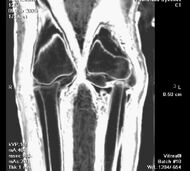Biography
Teshemmin was a woman who lived in ancient Egypt during the rule of Cleopatra, approximately 51-30 BC. According to inscriptions on her tomb, she was the daughter of a priest in ancient Egypt. This made her a member of the upper echelons of ancient Egyptian society. She enjoyed a life of luxury consisting of sweet foods and was able to live longer than the average person at that time. Teshemmin was unearthed in 200 AD and brought to the University Museum of Bergen in 1828.
Mummification
Teshemmin was mummified after her death at an old age. She was covered with resin and then wrapped with fragments of linen. Also, she was mummified wearing a tunic.
Studies
CT scans were conducted on Teshemmin's remains in 2009 at the Haukeland University Hospital. Upon opening her tomb, researchers saw that some of textiles used to cover her body were damaged. There was also significant damage in her facial area, where there seemed to be a mask previously. This indicated that theft may have occurred which resulted in the removal of valuables from her tomb. Also, the mask was likely to have been made of gold which would have been very valuable in ancient Egypt.

Mask of Teshemmin
Pathology
The CT scan results showed that Teshemmin had a fragile skeleton. This meant that she suffered from great amount of joint pain throughout her life. Furthermore, it was found that she had a hunched back and several bone fractures that did not heal properly. The fractures were located below her left knee and she had been suffering from these fractures for a long time. The CT scan results also indicated that Teshemmin had signs of skeletal disease which may have been due to an unbalanced diet.
CT scan results near her facial region showed that she was almost toothless, as she only had one tooth remaining in its socket. This is most likely attributed to her high end lifestyle which would have allowed her to eat sweeter foods like dates. Through the consumption of the sweet foods she would have likely acquired dental carries and experienced tooth loss.

CT scan showing knee fractures
CT scan showing facial area and teeth
Additional Information
More information regarding Teshemmin can be obtained through this University Museum of Bergen educational video: http://folk.uib.no/hmikk/Personlig/mummie_en.html.
References and External Links
1. Christoffersen, J. F. (2013). Forskere vil finne ut hvordan 4000-åringen levde, spiste og døde, ved hjelp av moderne teknologi. TV 2. Retrieved from http://www.tv2.no/a/3979873/
2. University Museum of Bergen Video: http://folk.uib.no/hmikk/Personlig/mummie_en.html
